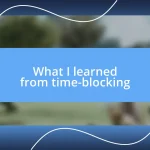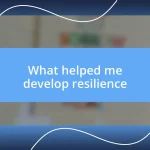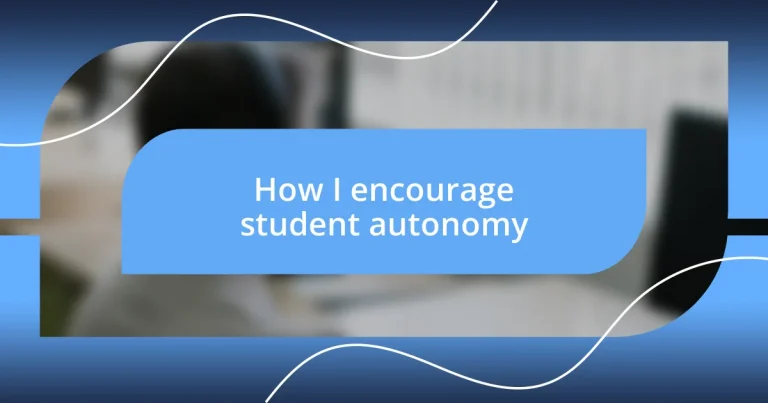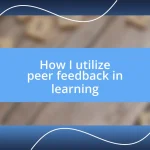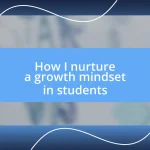Key takeaways:
- Student autonomy enhances motivation and engagement, allowing learners to take ownership of their education.
- Effective strategies like choice boards, self-assessment, and peer mentoring foster independence and critical thinking.
- Celebrating student achievements, both big and small, cultivates a supportive learning environment that inspires further success.
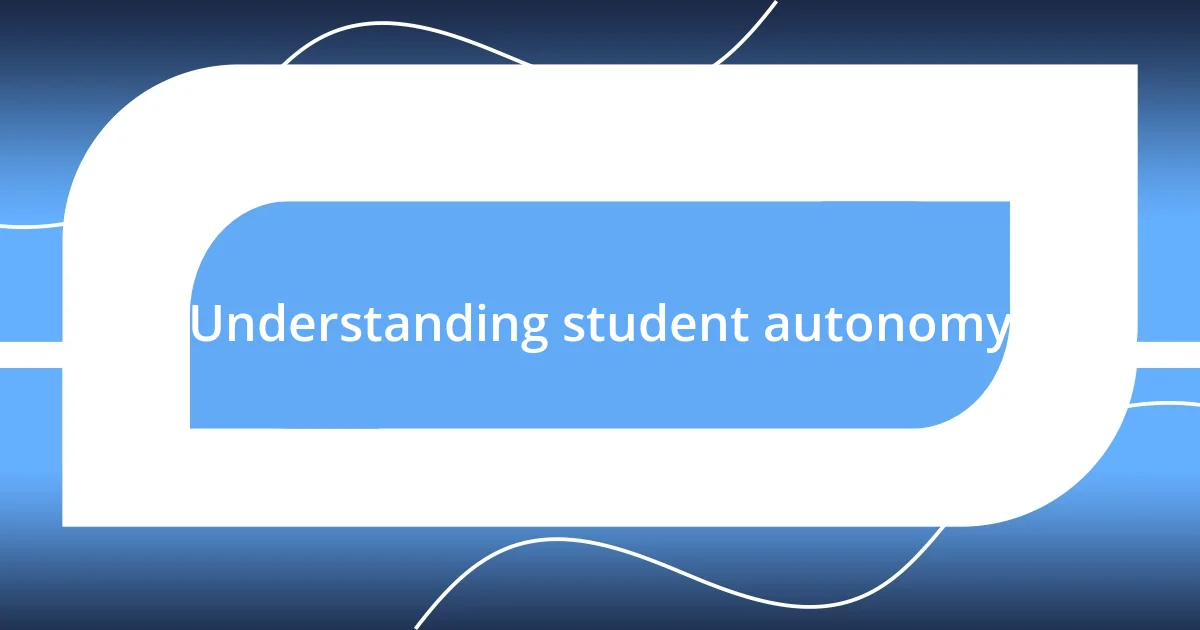
Understanding student autonomy
Understanding student autonomy is vital because it empowers learners to take ownership of their education. I remember a time when a student of mine chose a project topic that sparked their interest, rather than sticking with the prescribed curriculum. The excitement in their eyes was unmistakable, and it made me reflect on how autonomy translates into genuine engagement.
When we talk about autonomy, it’s more than just allowing choices; it’s about fostering a sense of responsibility. Have you ever noticed how a learner reacts differently when they feel they have a stake in their learning? I have, and it’s incredible to see how their motivation peaks when they feel empowered. This responsibility not only enhances their learning but also builds critical thinking and problem-solving skills.
Creating an environment that nurtures autonomy requires trust. In my experience, when I let students lead discussions or make decisions about their projects, I often find them stepping up in ways I never anticipated. Isn’t it fascinating how much potential resides within students when we step back and let them take the reins? It’s moments like these that truly highlight the transformative power of student autonomy in education.
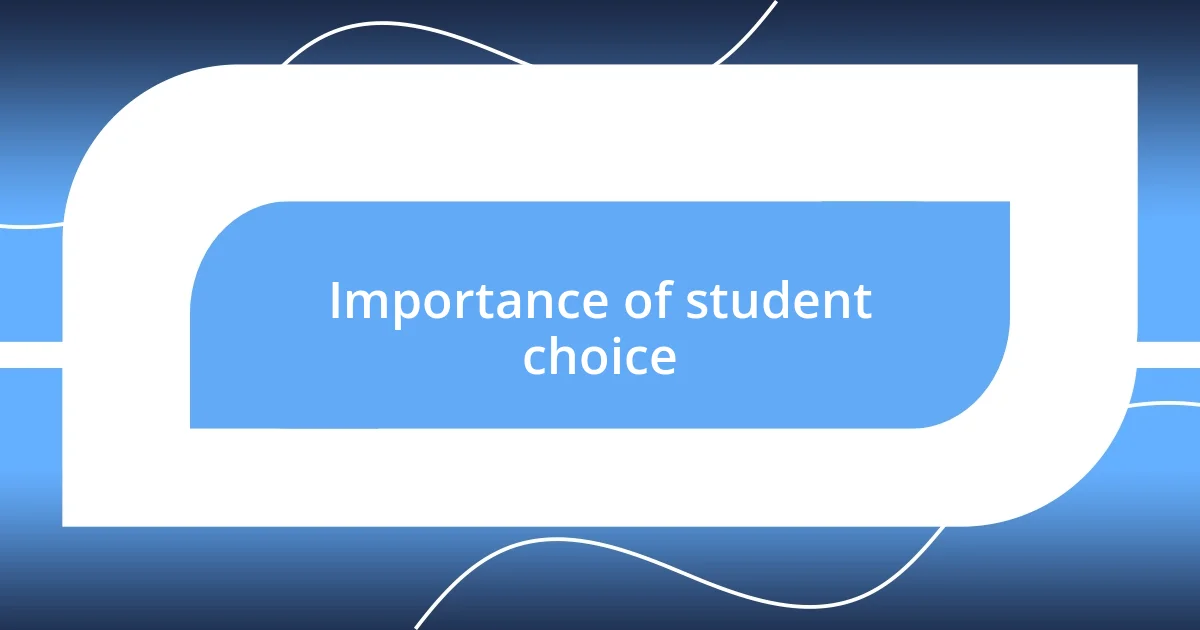
Importance of student choice
Student choice is crucial in any learning environment because it fosters a sense of ownership that can dramatically enhance motivation and engagement. I recall a moment during a group project when I allowed students to decide how to present their findings. One group opted for a skit, while another created a podcast. The creativity that sprang forth was astonishing! It wasn’t just about what they were learning, but how they chose to express that knowledge.
The benefits of student choice extend beyond excitement; they contribute significantly to deeper learning. Here are some key points to consider:
- Increased Motivation: When students choose, they’re often more invested in their work.
- Enhanced Critical Thinking: Making choices requires them to evaluate options and think critically about the best approach.
- Ownership of Learning: Students feel a sense of agency, knowing their preferences shape their educational journey.
- Development of Leadership Skills: Allowing students to lead discussions or projects cultivates valuable skills for future endeavors.
I think it’s incredibly powerful to witness students engage with their education on their terms, and that’s something I strive to encourage in every lesson.
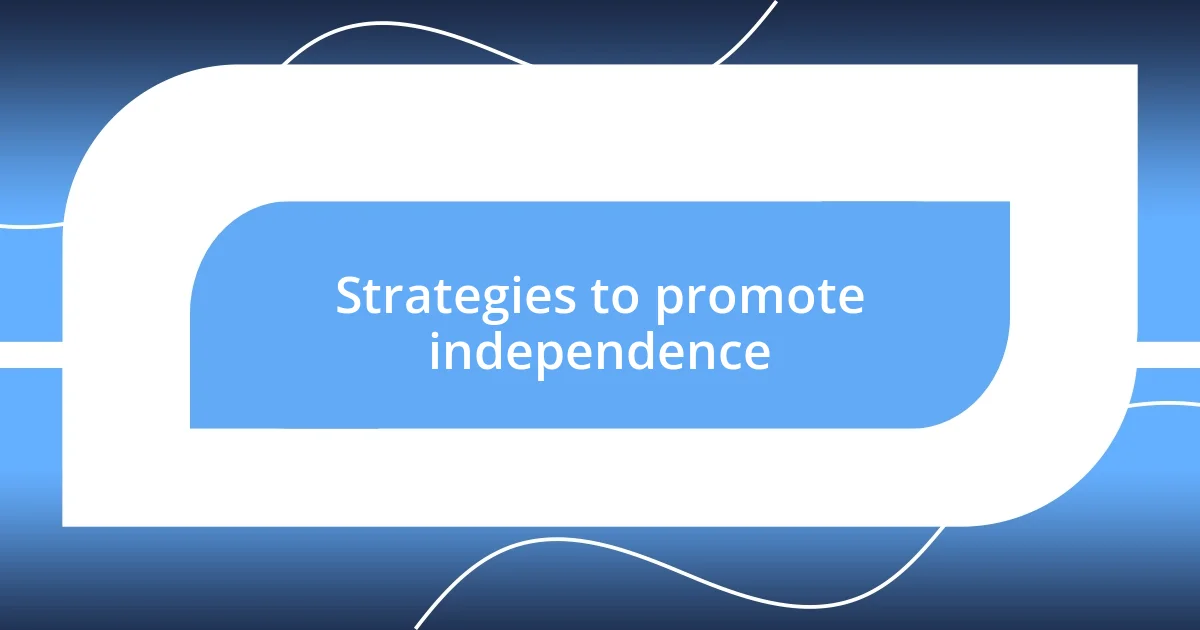
Strategies to promote independence
Promoting student independence can be achieved through various strategies. One approach I’ve found effective is to set up choice boards that allow students to pick tasks that align with their interests. I remember a student who was particularly fascinated by nature; when presented with options, they chose to create a nature documentary rather than a standard report. This simple shift not only made their work more enjoyable but also resulted in a presentation that was incredibly insightful.
Another strategy is to implement self-assessment techniques. I encourage my students to reflect on their work and set personal goals based on their assessments. After trying this, a student once told me how enlightening it was to evaluate their strengths and weaknesses. Witnessing this self-awareness develop has been rewarding, as it boosts their confidence when they take charge of their learning trajectory.
Lastly, peer mentoring can be a powerful catalyst for independence. I’ve had moments when students taught each other a concept they had mastered. The sense of pride they felt when explaining a topic was palpable. Isn’t it fascinating how teaching can solidify one’s own understanding while fostering collaboration? Those experiences make me realize that independence often flourishes in a community of learners supporting each other.
| Strategy | Description |
|---|---|
| Choice Boards | Students select tasks that align with their interests, enhancing engagement and personalization. |
| Self-Assessment | Students reflect on their performance and set personal learning goals, fostering self-awareness and accountability. |
| Peer Mentoring | Students teach each other concepts, solidifying their understanding while promoting collaboration. |
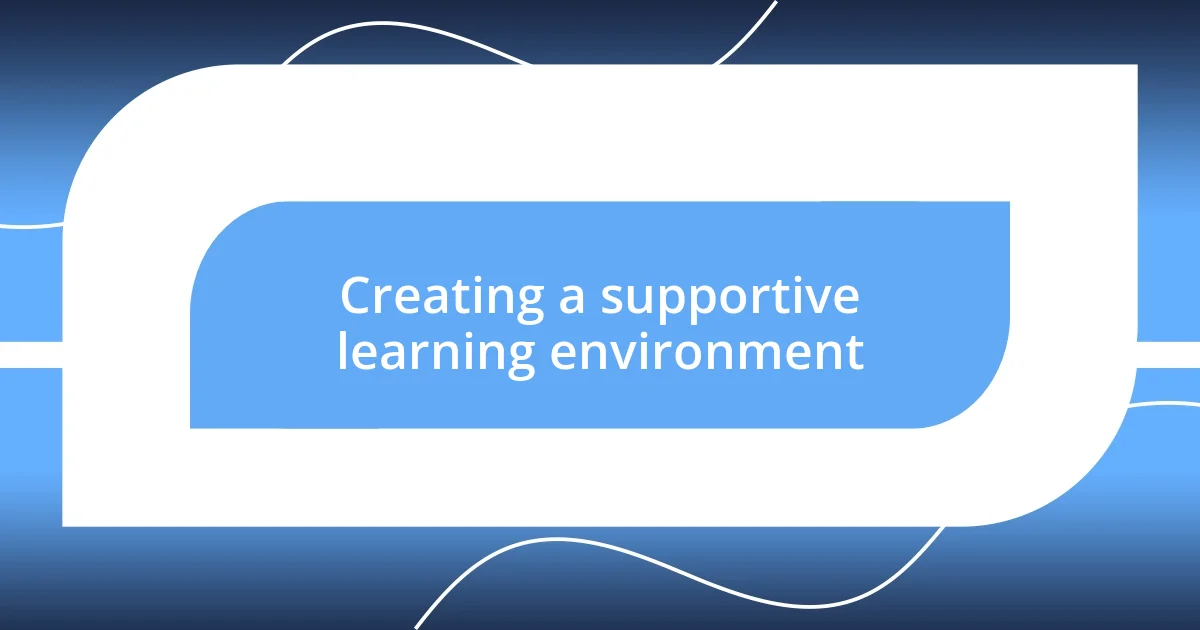
Creating a supportive learning environment
Creating a supportive learning environment is essential for encouraging student autonomy. One method I employ is to establish a classroom atmosphere where mistakes are welcomed as part of the learning process. I once had a student who struggled with math but made a significant error on a quiz. Instead of reprimanding them, I encouraged their peers to share insights on what they thought went wrong. The resulting discussion not only eased their anxiety but also created a bond among students as they learned to support one another. Isn’t it amazing how a single mistake can become a powerful teaching moment?
Additionally, I prioritize open communication. Regular check-ins allow students to voice their needs and preferences. I remember a time when a few students expressed felt overwhelmed by a particular project. Instead of dismissing their concerns, I adjusted the timeline and offered additional resources — that simple act of listening empowered them. By fostering an environment where students feel heard, I’ve seen more of them take initiative and ask for help when needed, which ultimately leads to a richer learning experience.
Moreover, I firmly believe in creating spaces for collaboration. Group work can be intimidating, but I always start with icebreakers that encourage students to connect on a personal level. During one activity, students shared their favorite hobbies, which sparked meaningful discussions. When I witnessed this friendly rapport blossoming, I realized that when students trust each other, they’re much more willing to share ideas and perspectives. It’s heartwarming to see how positive relationships can fuel creativity and collaboration in learning.
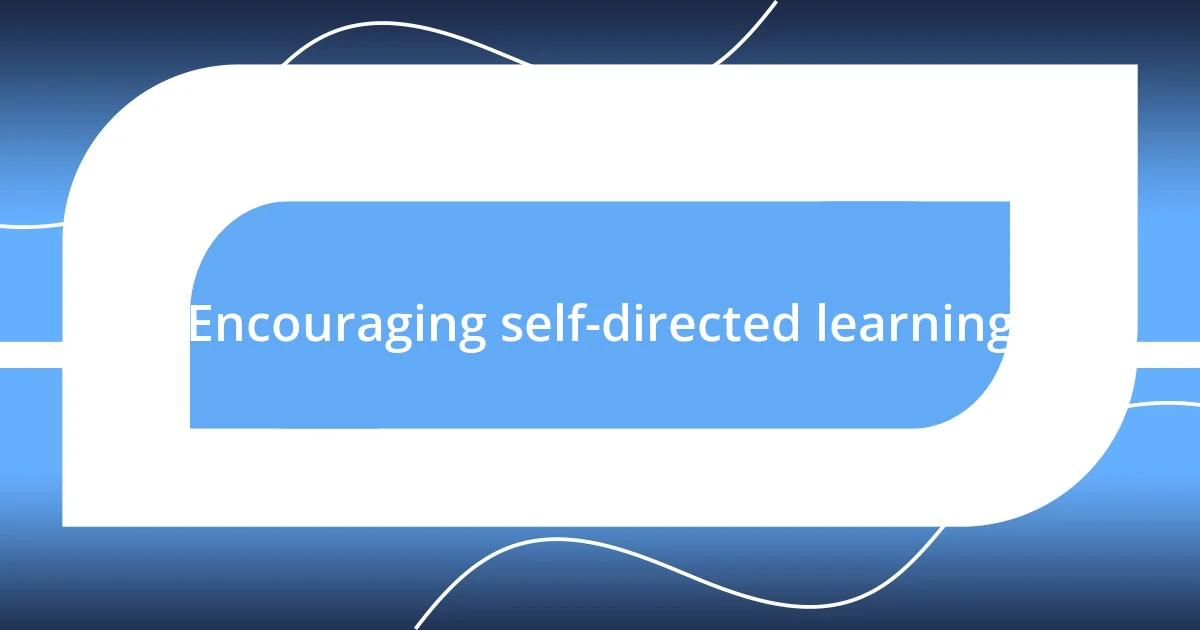
Encouraging self-directed learning
Encouraging self-directed learning is about igniting that spark of curiosity in students, allowing them to explore topics they genuinely care about. I often share my own experiences with open-ended projects in my classes, where students can investigate a question of their choice. One particular time, a student chose to delve into the impact of plastic waste on marine life. Watching their eyes light up during their research, it was clear they were not just learning; they were truly engaged. Isn’t it incredible how motivation flourishes when learners chase their passions?
In my experience, providing flexible learning paths is vital for nurturing self-direction. I remember a project where I allowed students to choose the format of their final presentation. Some opted for traditional slideshows, while others created engaging podcasts or even art installations. The diversity in their presentations revealed how differently individuals process information. This variety made it easier for everyone to shine in their unique way, prompting me to wonder: Why limit creativity when it can enhance understanding?
To further inspire independence, I like to integrate goal-setting sessions into our routine. I facilitate workshops where students outline their long-term academic goals and break them down into actionable steps. During one of these workshops, I witnessed a student who had initially lacked direction articulate a clear plan and timeline for their objectives. The transformation in their demeanor was astounding—suddenly, they were not just passive participants, but active architects of their education. Doesn’t it resonate with all of us when we take the reins of our journey instead of merely following along?
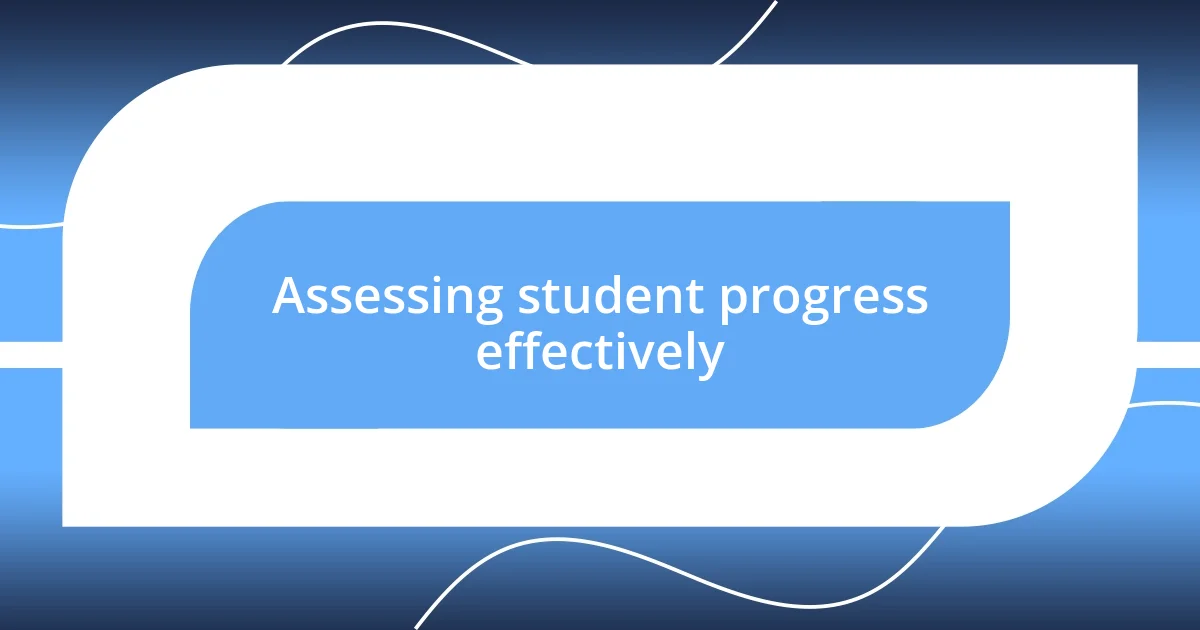
Assessing student progress effectively
To assess student progress effectively, I find that employing formative assessments is invaluable. These ongoing evaluations provide insights not just into what students know, but also into how they think. For example, I once used quick exit tickets at the end of a lesson, asking students to write down one thing they understood and one question they still had. The variety of responses illuminated their understanding and misconceptions, allowing me to tailor my instruction accordingly. How striking it is to see the learning journey laid out so clearly!
Another approach I cherish is involving students in self-assessment. I recall having students reflect on their work through journaling. They would evaluate not just their grades, but also their effort and growth. One student surprised me when they openly acknowledged areas for improvement while celebrating their achievements. This level of self-awareness is not just empowering; it cultivates a growth mindset. Isn’t it fascinating how students can often be their fiercest critics and strongest supporters?
Lastly, I emphasize the importance of feedback in my assessment process. Rather than just marking correct or incorrect answers, I focus on constructive comments that guide students. In one instance, I provided detailed feedback on a project, highlighting strengths alongside areas for growth. When the student returned, eager to discuss my notes, I witnessed their excitement transform into motivation for improvement. This interaction exemplified how meaningful feedback can inspire students to engage deeply with their learning—don’t we all thrive on acknowledgment and constructive suggestions?
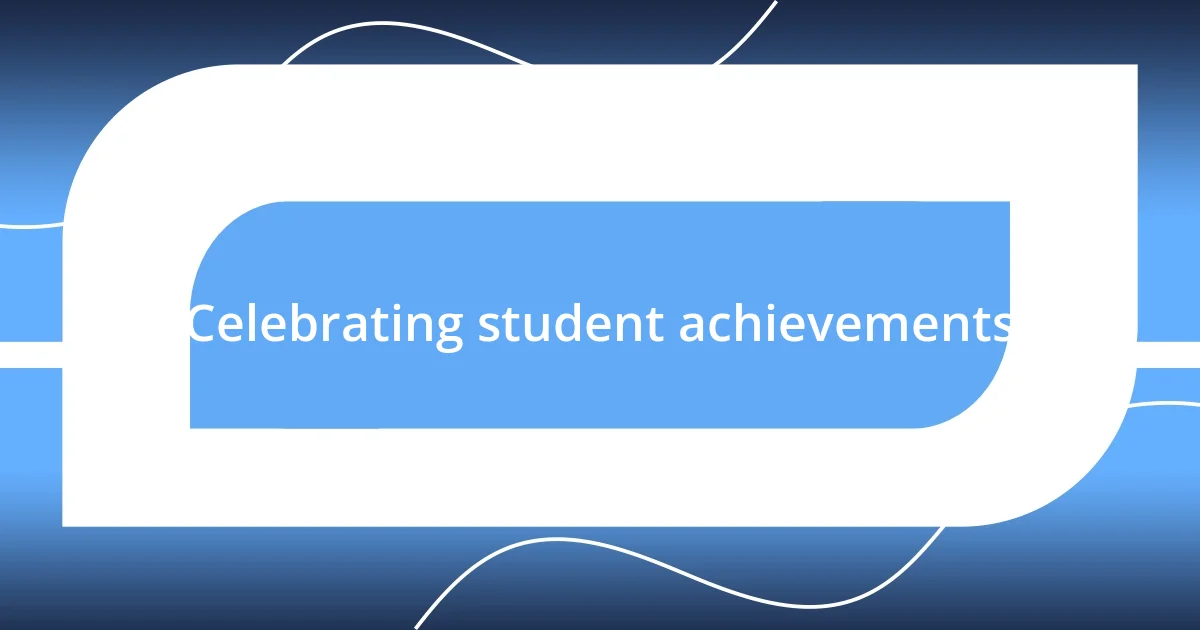
Celebrating student achievements
Celebrating student achievements is one of the most uplifting parts of teaching. It’s not just about recognizing grades or test scores; it’s about highlighting the individual journeys each student takes. I remember one student who, after months of diligent work, finally grasped a particularly challenging math concept. The pride radiating from their smile was a reminder that sometimes, it’s those small victories that matter most. Isn’t it remarkable how a simple acknowledgment can fuel a student’s desire to push further?
In my experience, creating a culture of celebration can significantly impact student motivation. I love organizing “achievement boards” in our classroom where students can post their accomplishments, big or small. It could be completing a challenging book, mastering a skill, or even helping a classmate. One time, a student printed out a picture of their art project and pinned it right in the middle of the board. Watching their peers gather around and cheer was heartwarming. Don’t we all feel a little extra inspired when we see others celebrating alongside us?
Furthermore, I like to incorporate celebration rituals at the end of projects or units. For example, I host a “Showcase Day” where students present their work to parents and peers. The energy in the room is electric! I recall a particular student who was initially shy but lit up on that day as they shared their research on renewable energy. Their passion shone through, and by the end, they received a standing ovation from their classmates. Can you feel that sense of connection and pride in such moments? These celebrations create a community of support, encouraging students to continue striving for excellence.






